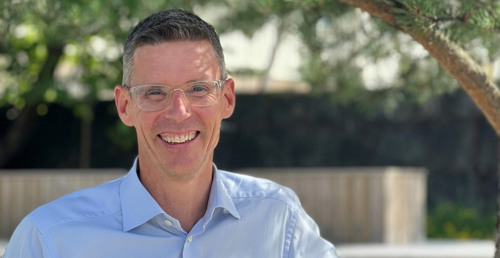Interview with Niklas Thulin

We got the opportunity to ask SESBC's program council chair Niklas Thulin a few questions about himself, and his views on the centre.
Niklas, what is your background?
"I was born and raised in Småland and moved to Gothenburg to study mechanical engineering at Chalmers University, where I also earned a licentiate degree in chemistry with a focus on composite materials. After completing my licentiate, I was a consultant in the automotive industry until I joined Volvo Powertrain in 2004. Rather quickly I was lured into the field of electrification and alternative drivetrains. The electrification community was rather small back in the day, and it felt like I knew almost all the PhD students and researchers in Sweden active in this area. After a few years at Volvo Penta, which included our first steps in battery energy storage solutions and 2nd life, I moved to Volvo Energy in 2022, where I now work alongside over 120 colleagues. As Head of Battery Energy Storage System product offer my main responsibilities are to plan, define and initiate future products, services and business models."
What is your involvement in SESBC?
"I have been involved already from the beginning, both as project representative and as Volvo’s program council member. Since this summer I was also appointed chair of the program council. I try to engage as much as possible operationally in the research projects we are supporting from Volvo. These interactions are usually both energizing and educational."
Can you describe Volvo Energy's Interest in SESBC?
"Volvo Energy has the purpose to accelerate electrification and drive circularity. We have several responsibilities in the Volvo Group including securing infrastructure required for zero-emission vehicles (charging and hydrogen), battery circularity (refurbishing, repurposing and recycling) and battery energy storage systems (BESS).
As the vehicle industry transitions, the dependency on the grid and the power system increases significantly. Charging is mostly seen as problem for the grid, but I am confident that chargers and vehicles also can play an important role in providing storage, balancing and flexibility.
We’re eager to contribute our perspective to SESBC and support building knowledge, while learning from other actors in the ecosystem. Enabling the energy infrastructure for electric trucks and machines is not something we can do alone. This collaboration helps us expand our network, gives us visibility while also identifying future potential employees and specialists."
What opportunities and challenges do you see for SESBC?
"The major strength of SESBC is bringing together grid ecosystem organizations of different size, maturity, knowledge and roles. However, managing this diversity of perspectives and interests can be difficult and it is important to also ensure necessary competition and business confidentiality. Expectations on time frames can also be a challenge. Industry typically seeks answers here and now while academia usually has the luxury of longer time horizons."
What expectations do you and Volvo have from the SESBC collaboration?
"Bringing a behind-the-meter perspective I am personally eager to learn more about the larger grid functionality and its dependencies. I’m also curious about storage solutions beyond lithium-ion and how distributed resources in society can be better utilized.
From Volvo we expect to gain practical outcomes from the projects, like battery lifetime modelling, that can be integrated into our projects and business. We also anticipate seeing commercial partnerships emerge through collaborations within the centre and hope to bring PhD students into our organization.
For SESBC, I hope the centre will establish itself as a key platform in the ecosystem, fostering new collaborations also with international centres and actors. For example, in the US a new national R&D centre dedicated to grid energy storage was recently launched."
If you look into the future - what would be the optimal outcome?
"Ultimately the portfolio of projects in the centre will contribute to incorporating more affordable renewable energy in the Swedish grid. I also hope to see that research and collaboration in SESBC have created new business opportunities and supported scaling of some of the smaller companies involved in the centre. Having established more international knowledge sharing and relationships would in my book also be a successful outcome."
How would you like the Industry Forum to function?
"I believe the forum has an important role in highlighting and framing current challenges and gaps seen by the industry partners. Pollinating these with academic interests will support the collaboration in the centre and stimulate innovation. I also hope that the forum members will act as SESBC ambassadors within their own networks, attracting new partners to the centre."
Finally, can you share any none-work related triva about yourself?
"Outside of work, I have a house and garden from the seventies and two teenagers at home, which currently leaves little time for hobbies. I do enjoy photography a lot and have even had some exhibitions. A fun fact is that one of my electron microscopy images from my research was featured on the cover of the Journal of Materials and Science. It was a great feeling holding that in my hands, when papers were still on paper."